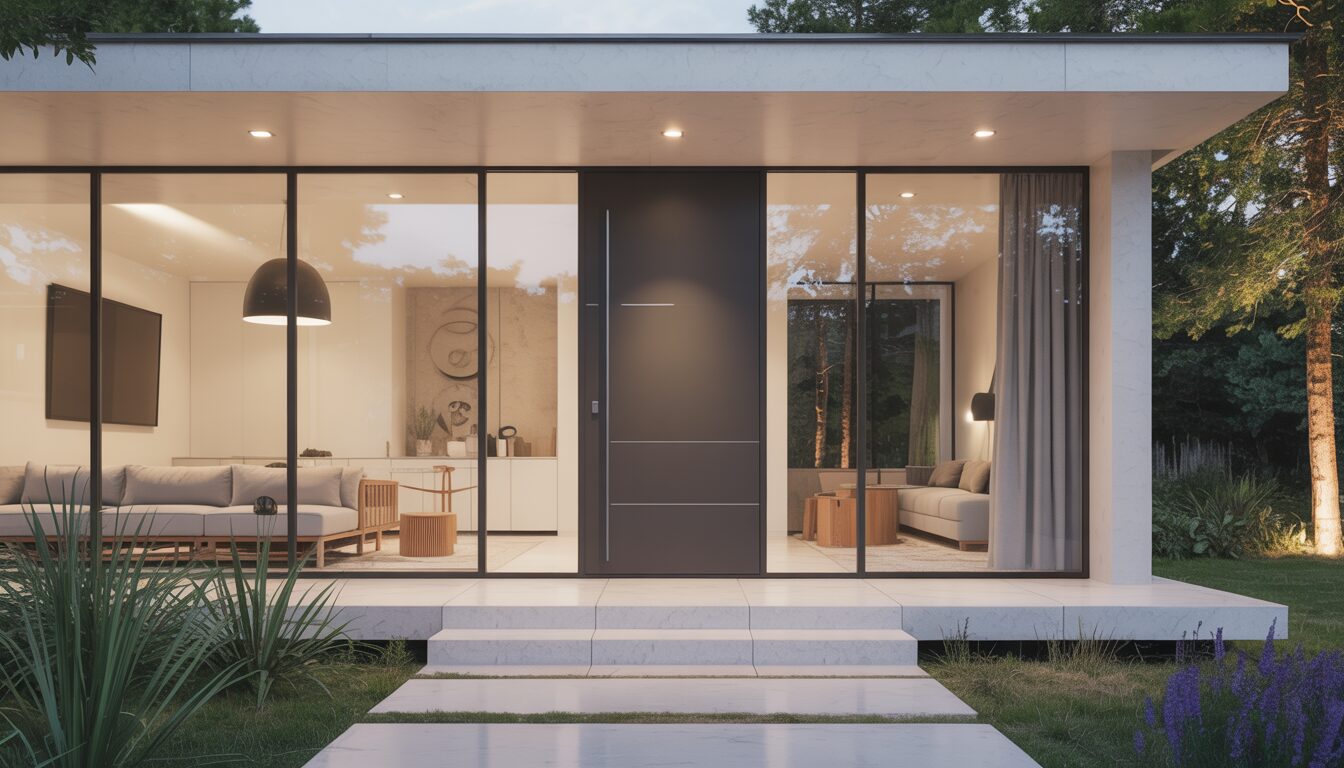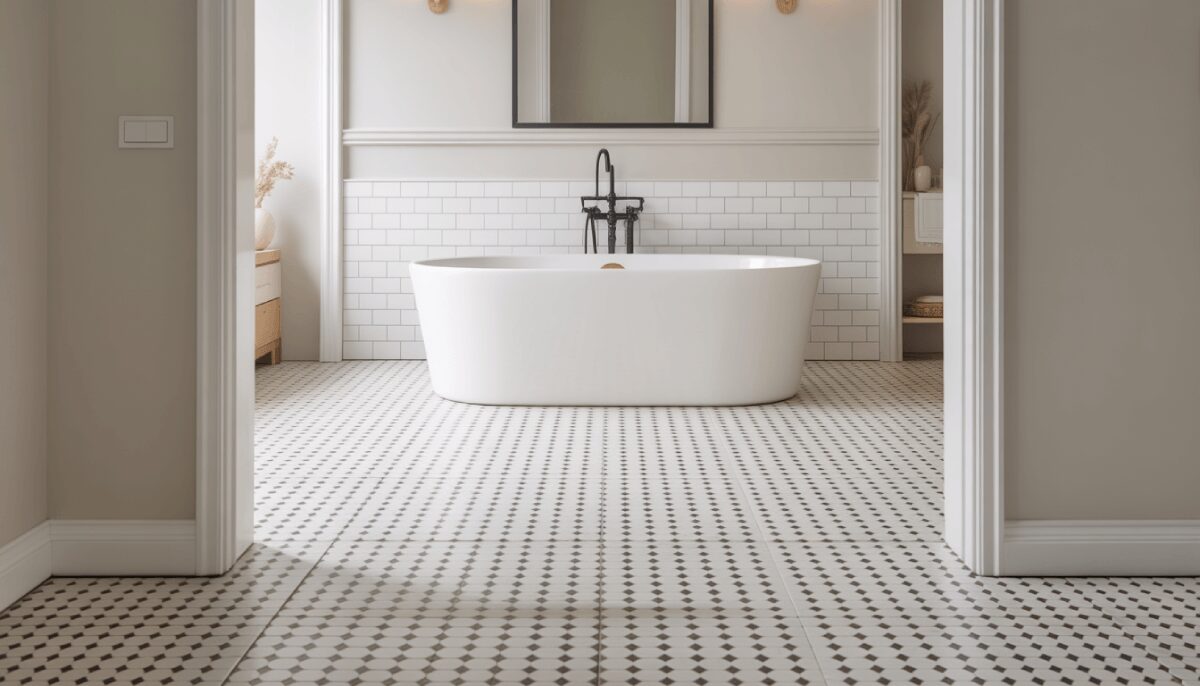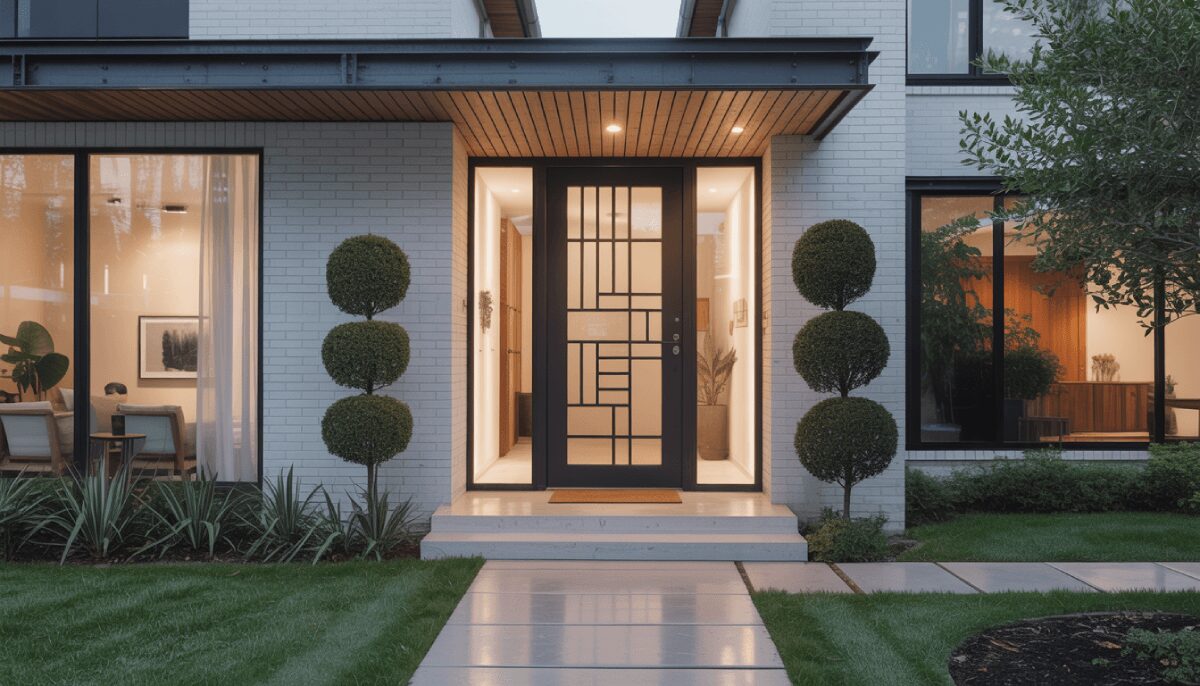Low-e coatings play an important role in the overall performance of a window and can significantly affect the overall heating, lighting and cooling costs of a home.
What exactly is low-e glass? How does it work?
To answer these questions, the “e” in low-e glass must be explained:
The “e” stands for emissivity. Emissivity is the ability of a material to radiate energy. When heat or light energy, typically from the sun, or HVAC system (heating ventilation air conditioning)—is absorbed by glass it is either shifted away by air movement or re-radiated by the glass surface.
Highly reflective materials have a low emissivity and dull darker colored materials have a high emissivity. All materials, including windows, re-radiate heat in the form of long-wave infrared energy depending on the emissivity and temperature of their surfaces. Radiant energy is one of the important ways heat transfer occurs with windows. Reducing the emissivity of one or more of the window glass surfaces improves a window’s insulating properties. Therefore, having low-e glass ultimately can improve the insulation of a home from external temperatures in any climate.
To reduce the emissivity of glass, low-e coatings have been developed to minimize the amount of ultraviolet and infrared light that can pass through glass without compromising the amount of visible light that is transmitted.
How can homeowners tell if their windows have low-e glass?
The low-e coating is usually placed on one of the inside glass pane surfaces of the insulating unit. Homeowners can test for the low-e coating in a window by doing the following:
Hold a lit match or a pen light up in front of the window. In a double pane insulating glass unit, four reflections of the flame or light (or two per lite of glass present) will appear due to the four glass surfaces of the insulating glass unit.
If the window contains low-e glass, one of the images will be a different color than the rest of the images.
If the window does not have low-e glass, the four reflected images will be the same color.
What are Low-e Windows?
There are two types of Low-E (low emissivity) glass:
• Pyrolytic or hard coat
• Sputtered or soft coat
Hard coat low-e glass (Pyrolytic):
Hard coat Low-E glass is created by pouring a thin layer of molten tin onto a sheet of glass while the glass is still molten. As a result, the tin becomes welded to the glass. This process makes the hard coat very durable and difficult to scratch or remove. In most cases, this hard coat low e glass has a blue tint to it and is often used in single glazed windows.
Soft coat low-e glass (Sputtered):
Soft coat Low-E glass is created by applying silver, zinc or tin to glass in a vacuum. The coating is delicate and if exposed to air, the coating is subject to oxidation. Therefore, soft coat low e coating must be between two layers (or panes) of glass. While soft coat glass is more expensive than hard coat low e glass, it has superior transmission of visible light. However, it is less durable and requires ideal storage and handling conditions to ensure the glass is not damaged.
Which low-e coating should you choose?
The type of coating you select for your windows is dependent on the climate you live in. As a general rule:
Soft coat low-e glass is ideal for warmer climates: Soft coat will help you save on air conditioning costs by not trapping heat in your house as it has the ability to block up to 70% of UV rays. Low e coatings are placed on the inside surface of the outer pane of glass. This prevents the external heat being transferred from the hotter outer pane to the cooler inner one.
Hard coat low-e glass is best for cooler climates: Hard coat will help keep your heating costs down. The coating prevents the warmer inner pane of glass from transmitting heat to the colder glass on the outside of the window, reducing the heat lost to the cold air coming from outside.
Therefore the best option for our area is both soft coat and hard coat to allow for the changing seasons.
Written by Rob Wood
Window Sales Specialist






